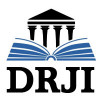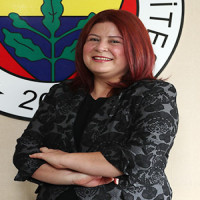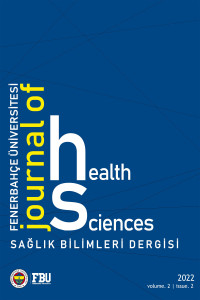Research Article
Clinical Research
Review
Aim & Scope
Fenerbahçe University aims to publish original scientific articles in Turkish and English in the field of health sciences in Fenerbahçe University Journal of Health Sciences (FBU-JOHS), which is part of the periodicals academic publications.
Within the scope of the journal, short reports, case studies, original research articles, letters to the editor and review articles in the fields of Nutrition and Dietetics, Language and Speech Therapy, Dentistry, Midwifery, Pharmacy, Occupational Therapy, Physiotherapy and Rehabilitation, Nursing and Medicine are evaluated. The languages of the journal are Turkish and English.
Author Guidelines
Please upload the article to the system in accordance with the template in the main text file. Articles that are not uploaded in accordance with the template will be forwarded to the authors again for correction and will be evaluated later.
Click here to access the journal template.
A. Preparation of the Article Application
Authors must follow the rules specified in the Manuscripts. Applications that do not comply with these rules are returned to the authors without being evaluated by the referee. Information on the articles to be submitted for publication and their appendices are listed below:
1. Application Letter
In this letter, it should be stated that the manuscript has been read and approved by all authors and is the product of an original work. It should be stated whether there is a conflict of interest with any author, institution or organization.
2. Ethics Committee Approval Certificate (If necessary, it should be attached as a separate file for research articles.)
3. Tittle Page (Identity information of the Author(s) must be added as a separate file.)
3.1 Information About the Author(s)
The name of the article, the name of the author, the institution to which he/she is affiliated, the city and country he/she lives in, the e-mail address, and the ORCID number should be submitted as a single 'MS Word' file as the Tittle Page. In multi-author articles, the identity information of all authors should be specified separately on the Tittle Page.
The contribution rate of the researchers should be stated on the tittle page. The initials of the authors should be given and the contributions of the authors should be indicated with the initials of the names and surnames of the authors in the sections of "subject selection, design, planning, data collection and analysis, writing the article, reviewing with criticism". This part should be added to the title page and not included in the main text.
In addition, 280-character messages are shared in order to reach large audiences and increase the number of citations of the articles published on the social media accounts of our journal (Twitter and Linkedin). For these reasons, we expect you to prepare a 280-character message about your social media addresses (if any) and how you want your article to be shared on social media, and add this message to the Tittle Page. In these aforementioned messages, you will be mentioned by adding your social media address (if any).
3.2 Acknowledgments and Explanation
At the end of the ID page the following information must be given;
• If there are people or institutions that contributed to the research, for example, "Supported by TÜBİTAK [grant numbers xxxx, yyyy]".
• If the article sent for publication is an article produced from a paper or thesis whose summary has been presented elsewhere but has not been published as a full text, it should be given as 'Explanation'.
4. Article Text
The sections specified in the items listed between 4.1 and 4.5 below should be included in the template given in accordance with the journal rules in the order given.
The language of the articles sent for publication can be either Turkish or English. Manuscripts should not exceed 6000 words in research articles, 4000 words in reviews, and 3000 words in case reports, excluding abstracts, figures and tables, footnotes and references.
In addition, all article text must comply with the format specified below:
• The text of the article should be in 'MS Word' format in A4 (vertical), single column and page margins should be 2.5 cm. The text should be written in Arial font style and 10 points, justified. Line spacing should be 1.5 in the main text and 1 in the abstract, endnotes and bibliography sections.
• Automatic 6 pt. before and after the paragraph. space must be added.
• No indentation should be made at the beginning of the paragraph line.
• Article title, all headings should be bold and subheadings.
• All pages should be numbered consecutively, starting from the title and abstract page.
• In addition, no special formal arrangements should be made.
4.1 Title of the Article, Abstract and Keywords (Turkish and English)
The title of the article; An unstructured (in a single paragraph, without subheadings of purpose, method, findings and conclusion) between 150-200 words (abstract) describing the purpose, scope, and main results of the research; There should be 3-5 keywords under the abstract. English keywords should be selected from Medical Search Heading (MesH), Turkish keywords should be selected from Turkey Bilim Terimleri (http://www.bilimterimleri.com/). References, figures, table numbers and footnotes should not be used in the abstract. Keywords are in alphabetical order and should be separated by commas. Title, abstract and keywords should be given to all articles in both languages, first in Turkish and then in English for Turkish articles, and then English and then Turkish for English articles.
4.2 Main Text
All headings in the main text (such as introduction, method, findings, discussion and conclusion) should be numbered as sequentially (1st, 2nd, 3rd, ...) and hierarchical (1.1, 1.1.1, 1.1.2, 1.2, etc.). This numbering should also be used for internal cross-reference (as mentioned in section 1.3, etc.). Each heading should appear on a separate line, one line space must be left before it.
4.2.1 Citations
please pay attention to use direct quotations in the text and not to exceed a certain percentage in the whole text. APA Style (https://apastyle.apa.org/style-grammar-guidelines/citations/quotations) should be used for in-text citations.
Quotations less than 40 words should be shown in double-quotes, provided that the source is cited. Double-quotes are not used in block citations of more than 40 words. The block quote is started as a paragraph 1 cm from the left and written in 9 points. The source is indicated at the end of the quote. In quotations, omissions in the original text are indicated with three dots and the author's own views are enclosed in square brackets.
4.2.2 In-text references
For in-text references, the American Psychiatric Association References-APA Style (https://apastyle.apa.org/style-grammar-/citations) should be used.
Examples:
-As Foucault (1991) claimed...
-Foucault states that ... (1991, p.40).
-General history emerges as ... (Foucault, 1991, p.22).
4.2.3 Tables
Tables should be numbered according to their order in the text. Tables will be created as their content requires; the table number will be left aligned, bold (bold) at the top and the table name will be written next to it. The table title can start with a capital letter or only the initials can be capitalized. However, it should be consistent within the text. The divided table must have a title. Notes section will be written in smaller font under the table.
Tables should be referenced in the text, if it is in a sentence, it should be written in bold [bold] as Table 1. Fractional numbers should be shown using commas (,) in Turkish texts and dot (.) in English texts. Tables should not have vertical borders, horizontal borders should be used at the top and bottom or to separate table sections.
4.2.4 Figures
Figures (pictures, drawings, plans, maps, graphics, photographs, etc.) should be numbered according to their order in the text. Figures will be shaped centered on the page, the figure number will be left justified at the bottom, bold (bold) and the figure name will be written next to it. The citation will be the same as the in-text citation.
Figures should be referenced in the text, if it is in a sentence, it should be written in bold [bold] as Figure 1.
Symbols, abbreviations and definitions must conform to the international system of units (SI). If there are units other than these, their equivalent(s) should be given in SI.
Abbreviations should be defined in parentheses after their first occurrence in the text. It should be ensured that abbreviations are consistent throughout the article.
In mathematical representations, options that will facilitate equations, typesetting and notation marks should be preferred. Equation numbers should be numbered consecutively in parentheses on the right.
4.4 Submissions / Endnotes
References are used to give additional information to the discussion in the text and to make side expansions. References in the text should be kept to a minimum. References are marked as [1], [2], [3] with numbers in square brackets at the end of the relevant sentence in the text according to their order of arrival. References are placed before the Bibliography at the end of the text, in accordance with the order specified in the text. While listing the references at the end of the text, 1., 2. ,3. should be numbered without square brackets. References referenced in references are shown in the same way as in-text references.
4.5 References
The references should be at the end of the text. Every reference cited in the text should be present in the bibliography. Likewise, every reference mentioned in the bibliography should have in-text citations. References are listed in alphabetical order by authors' names and in chronological order for each author.
The 'APA Style' reference formatting should be used in bibliography and in-text references. More detailed information for “APA 7th Edition” reference formatting, some examples of which are given below, can be found at https://apastyle.apa.org.
Examples:
Book:
Surname, A. (2015). Book Title. Published City: Publisher Name. Journal Article:
Surname, A., & Surname, A. A. (2012). Article title. Journal Name, 12(4), 187–195. https://doi.org/10.000/000000 (DOIs of the published articles should be included.)
Conference/Congress Statement:
Surname, A., & Surname, A. A. (2014). Paper Title. Name of the Organization where the Paper was Presented, Place of Issue.
Thesis:
Surname, A. (2016). Thesis Title (Unpublished Doctoral Thesis). Institution Name, Location.
Website:
The BBC (http://www.bbc.co.uk).
Surname, A. (2013). Document Name [Format]. Access address: http://URL Access Date: 09.10.2018
5. Visual Documentation
All tables and figures (pictures, drawings, plans, maps, graphics, photographs, etc.) should be placed in the text of the article (in MS Word file) in low resolution with their explanations.
All these images should be sent separately, in print quality, with 300dpi resolution and with a short edge of at least 10 cm. Drawings and tables must be legible when reduced to size. Drawings and tables should be sent in “pdf” format if created using Word format or other programs, or “tiff”/”jpeg” format suitable for printing and readable when reduced.
B. Evaluation of Articles and Publication Process
Manuscripts submitted for publication are evaluated by the Editorial Board of the Journal in terms of conformity with publication principles and quality, after being reviewed by the editor-in-chief and assistant editors. The Editorial Board of the Journal has the right to publish or not to publish a submitted article. The article, which is not found suitable for publication as a result of the preliminary examination, is not included in the evaluation process and the author is informed. If there are any deficiencies, it is returned to the author for correction and resubmission. The article found suitable for publication is evaluated by two referees in the relevant field for evaluation. The referees examine the submitted articles in terms of method, content and originality and decide whether they are suitable for publication. In case of significant differences of opinion regarding the acceptance of the article, the opinion of the third referee is sought. Manuscripts not accepted for publication by the referees are returned to their authors.
Manuscripts sent back to their authors to be developed and/or corrected in line with the preliminary review and referee evaluation are sent back to the journal within one month at the latest, after making the necessary corrections. Authors should indicate the changes they have made according to the referee's suggestions by coloring the text in different colors and preparing a separate file for the referees' responses.
According to the results of the referee reports received within the specified period, the authority to decide whether to publish the article is in the editorial board. Articles are included in the program to be published in the appropriate number of publications by the Editorial Board and the author is informed.
The copyright of the articles accepted to be published after the evaluation process is deemed to have been transferred to Fenerbahçe University. In this regard, the author declares that he has transferred the copyright by choosing the option specified when uploading the article to the journal. The scientific, ethical and legal responsibilities of the opinions and translations in the articles published in the journal belong to the authors. Quotations can be made from texts and photographs by showing the source. However, published articles cannot be republished elsewhere (in print or on the internet) without the written permission of the journal management. All authors who submit articles to the journal are deemed to have accepted these principles.
Ethical Principles and Publication Policy
All authors who submit articles for evaluation and publication approve and agree to comply with the International Commission of Publication Ethics (COPE), Good Clinical Practices Guidelines, Declaration of Helsinki, and comply with them. Manuscripts sent to the journal for review are evaluated within the scope of International Standards, taking into account the recommendations of the International Committee of Medical Journal Editors (ICMJE) and the principles of the International Committee of Publication Ethics (COPE).
Price Policy
Fenerbahce University Journal of Health Sciences does not charge any fees from the authors after the application or under any name.
Indexes
Journal Boards
Editor-in-Chief


Editor




Co-Editor
Editorial Board



Section Editors
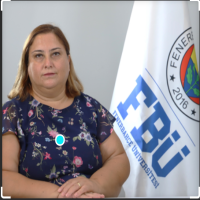




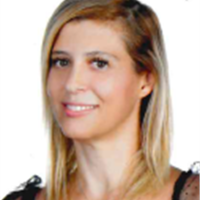
Foreign Language Editors
Journal Secretariat


